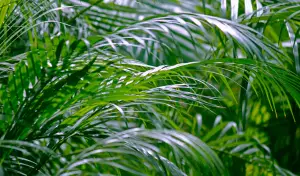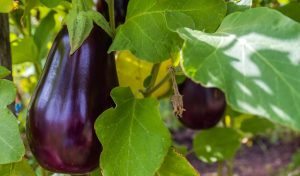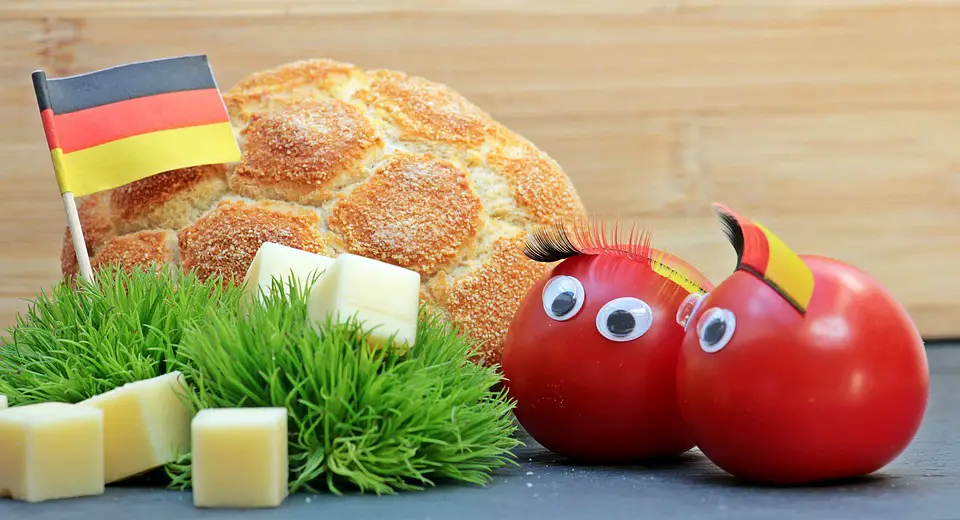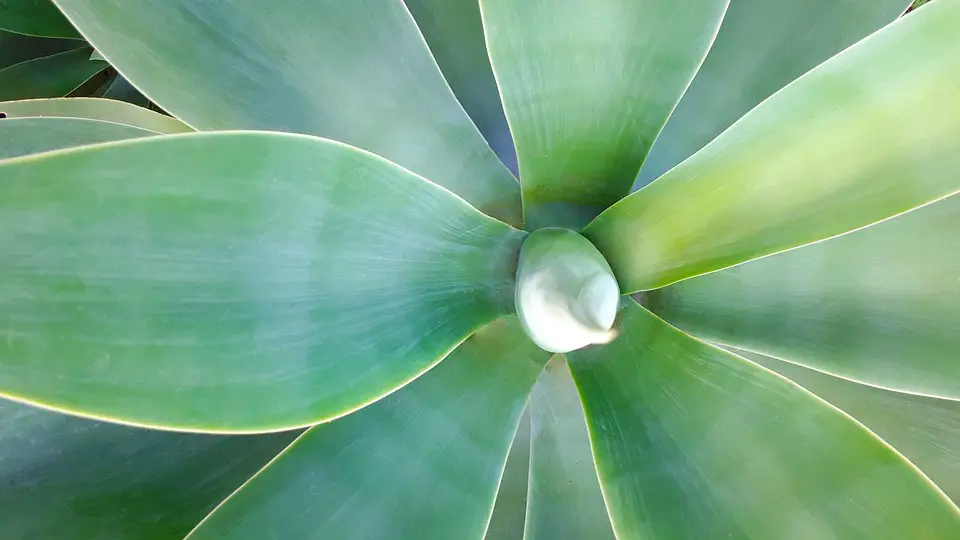Soil preparation is a key step in getting the most out of your garden.
The type of soil you have, and how it’s prepared for planting, can make or break your garden.
So before you plant anything, take time to prepare your soil properly.
One of the key secrets to a successful garden is the quality of the soil. Good soil will have everything that plants need for strong, healthy growth, whereas poor quality ground will result in poor yields. Time spent preparing your soil before planting will reap rewards for years to come.
Two important gardening terms
Organic Matter is decomposed plant and animal material that has been in contact with the soil for some time, resulting in a black substance that can be easily broken apart.
Organic matter holds a lot of nutrients and moisture, keeping your plants well fed and hydrated.
Inorganic Matter is the non-decomposed pieces of rock and minerals like sand, gravel, or clay that have been crushed into small pieces.
Inorganic matter doesn’t hold a lot of nutrients like organic matter does. It can make soil heavy, hard to work with, and “cakey”.
There are two basic principles to follow: the first is to know the type of soil you have.
If your soil is sandy, or mostly sand, it will drain and warm up quickly.
If your soil has more clay in it, or is mostly clay, then watering will be harder for plants because they won’t be able to feed properly.
The second is knowing how much organic matter your soil has.
If it’s low, you should be adding more every year to keep the soil alive and healthy.
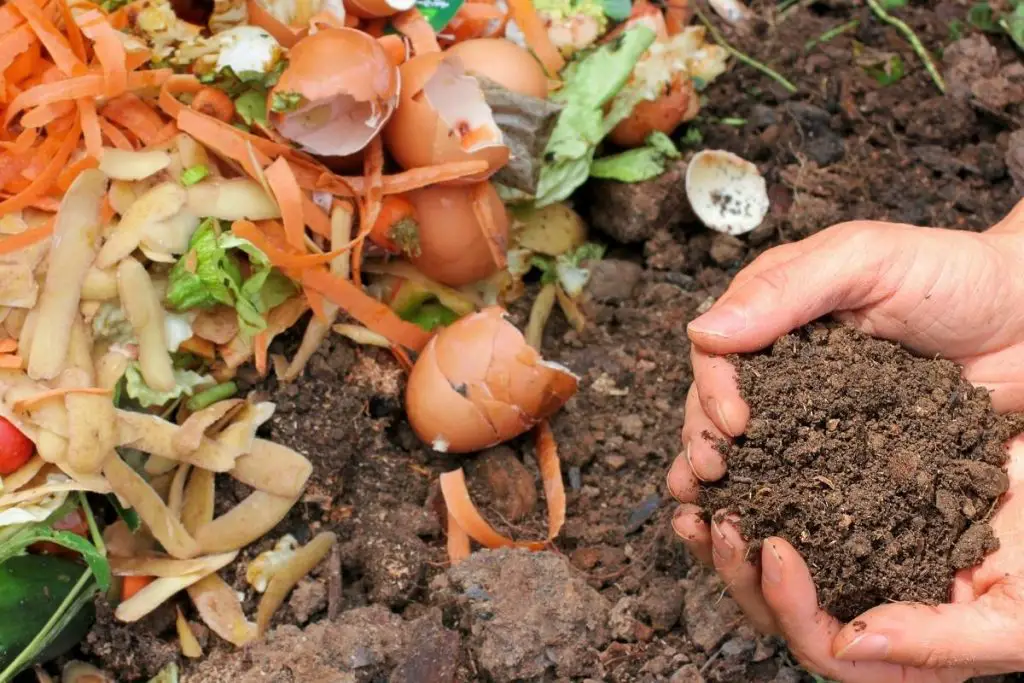
Determining your soil type
Some ways to determine the type of soil are:
Feel the texture by squeezing a handful together with your palm;
Take a small sample (perhaps 2 cups) of soil, and allow it to sit in a clear glass overnight.
After you’ve awakened the next morning , look at the color of the sample under bright light.
If it’s black, there’s plenty of organic matter in your soil.
If it’s brown or grey, you probably need to add more; and lastly, if your soil has a lot of sand in it, use your finger to feel how fine the sand is.
It will be smaller than pebbles and larger than clay particles.
Add organic matter to your soil
If you have access to animal manure or well-rotted manure, this is one way to add organic matter.
If you can’t get manure, there are many products at your local garden store that will help.
These include composts and other manures.
To spread them over your soil, you can use a spading fork or a fertilizer shovel.
Apply it about 3-4″ deep into the topsoil in spring, and till it in well.
This will help increase the amount of moisture and nutrients available to your plants throughout the growing season.
Another way is by adding green materials like grass clippings, weeds, etc.
Just make sure they’re not chemical laden or treated with herbicides (weed killer) as this can harm your soil microorganisms.
Let the green materials decompose and add nutrients to the soil while keeping it alive at the same time.
The best way is to turn these green materials into compost (composting), which will give your plants much needed organic matter for their healthy growth.
Manual soil preparation
One thing about gardening is that you will need to be prepared to undertake some manual labor, or to rope the family in to do it for you.
If the ground hasn’t been worked for a while and is hard or simply looking tired, then you will need to do some form of digging to open up the earth to make it useable.
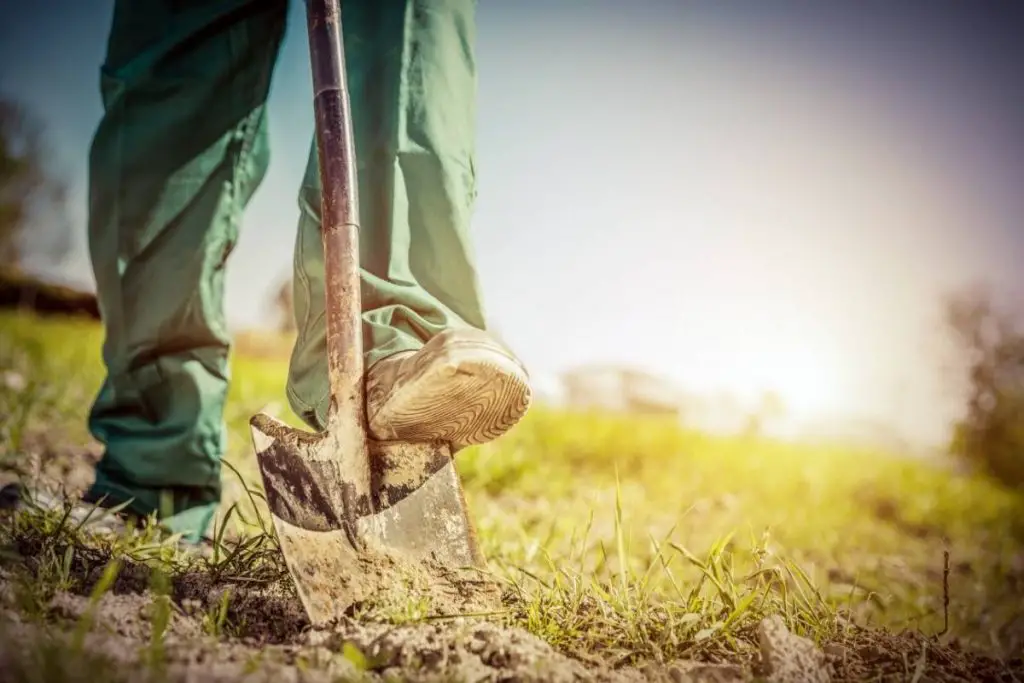
Single Digging
This is when you dig a single spade depth and is normally good enough for most gardening need, such as loosening the ground and burying weeds or adding compost and manure.
You can either dig out a spadeful of soil and twist it over so that it falls back into the hole or you can dig a trench.
Double Digging
Excellent if you have clay-like soils, as this process opens up the subsoil while turning over the top layer.
But it’s very labor intensive.
You dig two spade ‘spits’ deep which breaks up the sub soil as well as the top soil.
This helps to improve aeration and drainage and allows you to add much more organic matter to help to break the soil down.
You’ll normally need to do this on ground that hasn’t been worked before ( or in a long time ) and ideally just before the onset of winter frosts – the cold, freezing weather will break the heavy clods of soil into crumbs.
It is effective for heavy clay like soils but, be warned, it is tough work.
Forking
This is a technique that is like digging, only with a full sized garden fork.
It is a good way of breaking down clumps of soil from previously dug ground and for working manure and compost into the soil.
You can either use the full length of the fork to get right into the soil or can prick the soil over to aerate and loosen the surface.
Raking
The final stage of your soil preparation involves levelling the soil and breaking down any clumps of earth.
By raking rapidly to and fro your rake will break the earth apart into smaller chunks that are more suitable for plant growth.
You can also use the rake more lightly to remove debris and stones that may have been brought to the surface from digging.
Hoeing
Using a hoe is normally for weed control as the plants are growing, but you can use one to make seed drills and to loosen the earth before you plant your seeds and plants.
When should you dig the ground?
This really depends on your soil type:
Clay soils should be dug in the Fall before frost and left to the weather which will break them down into more manageable clumps.
The soil can then be broken into a finer crumb just before sowing or planting in Spring.
Light ground, such as sandy soil is best dug in Spring.
You should try to leave it alone during the winter weather and should cover it with some green manure, such as lawn clippings or leaf mould.
Don’t dig any ground when it is frozen or waterlogged as, not only is it really hard work, you run the risk of damaging the soil structure ( as well as your back ).
Final Words
Soil preparation is an important step in any garden.
If you want to get the best results with your plants, it’s essential that you prepare soil properly before planting anything.
There are many different methods for preparing soil and some can be more effective than others depending on what kind of plant life you’re trying to grow.
Being familiar with your soil type and taking the appropriate measures to prepare your soil before planting will help you to avoid problems during the growing season.


